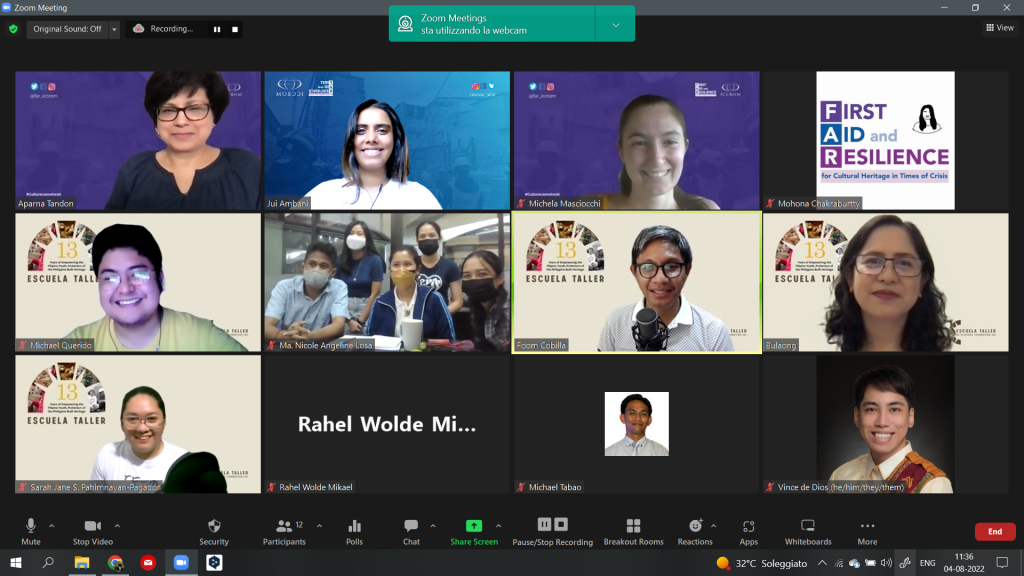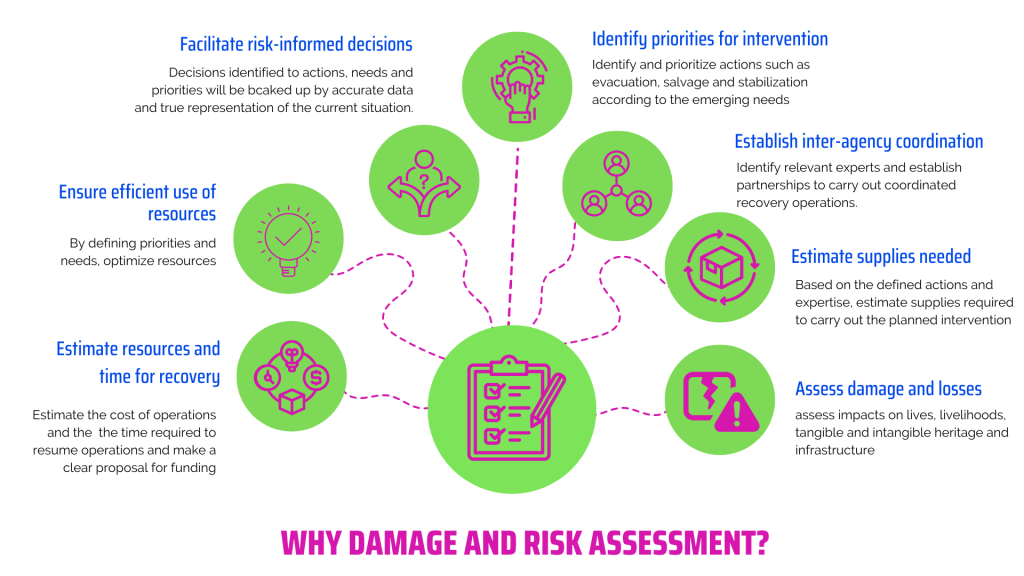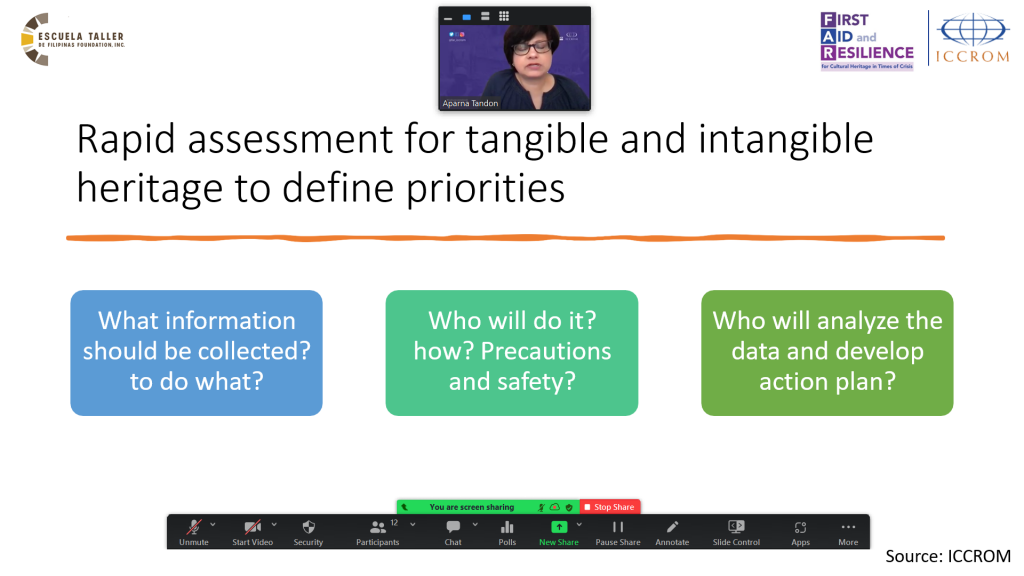Emergency preparedness is crucial to building resilience, especially for countries, such as the Philippines and Japan, that are located on the Ring of Fire – a seismically-active belt of earthquake epicenters, volcanoes and tectonic plate boundaries on the rim of the Pacific Ocean.
What first steps can cultural heritage professionals take to safeguard heritage in the face of a devastating disaster, without incurring further damage?

Rapidly implemented post-event damage and risk assessments, whether conducted remotely or on-site, are integral to an efficient emergency response. ICCROM’s FAR Programme specializes in this methodology and is experienced in helping governments to define priorities in the aftermath of large-scale emergencies and disasters.
The 7.0-magnitude July 2022 earthquake that hit the northern Philippines, destroyed several heritage sites and buildings, once again underscoring the importance of emergency preparedness. Aiming to implement an efficient response, ICCROM and Escuela Taller de Filipinas Foundation Inc., joined forces to establish a coordinated national methodology for future events, as well as discuss possible emergency interventions and future rehabilitation and repair of sites affected by the earthquake.
Ms Aparna Tandon, Senior Programme Leader, and Ms Jui Ambani, Consultant for Disaster Risk Management and Climate Change, from the FAR Team conducted a workshop on 4 August 2022 for Escuela Taller and the Cagayan Heritage Society on post-earthquake damage and risk assessment for safeguarding cultural heritage. The workshop highlighted the importance of these assessments and how to conduct them. We led participants through a step-by-step workflow to collect useful data using our well-established methodology and the new damage assessment app. The app automates large-scale data collection for damage and risk assessments for movable, immovable and intangible heritage. In this case, the forms on the app were customized to the context of the Philippines across several meetings and consultations.
The workshop was attended by the executive director of Escuela Taller, Tina Bulaong, along with a technical team of architects, engineers and other heritage professionals led by Michael Querido and Jeffry Cobilla. The Cagayan Heritage Society was represented by Michael Tabao who, in collaboration with Escuela Taller, will be field-testing damage and risk assessment forms for movable, immovable and intangible heritage in the most affected areas, including Ilocos, Abra and Cagayan.

What kind of assistance does FAR offer in an emergency?
In collaboration with local partner institutions, FAR has facilitated context-specific, post-event, on-site damage and risk assessments for movable, immovable and intangible heritage in the response to earthquakes, floods and conflicts.These assessments are now available to Member States on our web and mobile-based app. The FAR Programme of ICCROM aims to enhance preparedness among member states and is seeking partners to use the damage and risk assessment application in different emergency contexts.
Through its decade-long interventions in large-scale disasters and complex emergency situations, the team has provided technical assistance in over 14 countries, including: Belgium, Brazil, Croatia, Germany, Haiti, India, Iraq, Lebanon, Myanmar, Nepal, the Philippines, South Sudan, Syria and Ukraine. FAR has a ready-to-deploy network of over 1000 cultural first aiders in more than 87 countries, as well as field-tested and published methodologies for securing and recovering endangered tangible and intangible heritage.
Upon specific request of the affected Member State or ICCROM partner institution, as well as for incidents involving substantive damage to cultural heritage far exceeding the capacity of the affected Member State, FAR provides:
- Context-specific rapid needs
 assessments and post-event damage and risk assessments for safeguarding cultural heritage;
assessments and post-event damage and risk assessments for safeguarding cultural heritage; - On-site or online training for emergency responders, civil defense personnel, heritage professionals, experts, and volunteers to provide first aid to tangible and intangible heritage;
- Capacity building for planning and implementing post-disaster and post-conflict recovery and peacebuilding operations;
- Setting up interagency coordination mechanisms; and
- Sharing and translating relevant resources.
FAR has also developed a call to action to understand the impacts of COVID-19 on tangible and intangible cultural heritage and how to mitigate emerging risks. These forms gather data on secondary risks, monitor impacts and assess needs. The forms can be downloaded for free and customized here.
